This article was co-authored by wikiHow Staff. Our trained team of editors and researchers validate articles for accuracy and comprehensiveness. wikiHow's Content Management Team carefully monitors the work from our editorial staff to ensure that each article is backed by trusted research and meets our high quality standards.
This article has been viewed 98,281 times.
Learn more...
Ginataang bilo bilo is a popular Filipino dessert made from sticky rice balls and coconut milk. It typically contains sago and jackfruit; fancier versions will also contain sweet potato and plantain. The dish is typically served in the afternoon, and it can be enjoyed hot or cold.
Ingredients
- 20 to 25 glutinous rice balls (bilo bilo)
- 2 cups (475 mL) of water
- 2 cans of coconut milk
- ¾ cup (170 g) of white, granulated sugar
- 1½ cups (270 g) of sago, cooked
- 1½ cup (226 g) jackfruit, sliced
- 1 large sweet potato, peeled and cubed (optional)
- 2 plantain bananas, peeled and cubed (optional)
For Rice Balls
- 2 cups (300 g) of glutinous rice flour
- 1 cup (240 mL) of water
For Cooking Sago
- 1½ cups (225 g) of uncooked sago
- 6 cups (1.4 L) of water
Serves 6
Steps
Preparing the Rice Balls
-
1Combine the glutinous rice flour and water into a dough. Measure 2 cups (300 g) of glutinous rice flour into a bowl, then add 1 cup (240 mL) of water. Stir everything together with a fork, then turn the dough onto a flat surface and knead it a few times.[1]
- Make sure that you are using glutinous rice flour and not regular rice flour, otherwise the rice balls won't be chewy.
- Despite its name, glutinous rice flour does not actually contain any gluten.
-
2Adjust the consistency of the dough, if needed. The dough should feel stiff, yet pliable. If it is too sticky, add a little bit more glutinous rice flour. If it is too dry, add a splash of water. Knead the dough after each addition you make.[2]Advertisement
-
3Knead food coloring into the dough, if desired. You don't have to do this if you don't want to, but it can add a nice touch to the completed dish. Simply add 1 to 2 drops of food coloring into the dough, then knead it in until the color is consistent.[3]
- Add more drops of food coloring until you get the shade you want. Pink, pastel purple, pale green, and light orange are especially popular.
- To make multiple colors, divide the dough into separate batches first, then color each batch separately.
-
4Form the dough into balls. Use your fingers to pinch off about a ½ tablespoon worth of dough. Roll the dough between your palms to form a smooth ball, then set it aside on a baking sheet lined with wax paper. Repeat the process to make about 20 to 25 balls.[4]
-
5Cover the balls with a thin cloth. Set the baking sheet aside some place where it won't be bumped while you prepare the rest of the recipe. A counter at room temperature would be the best.
Cooking the Sago
-
1Add the sago to a pot of boiling water. Bring about 6 cups (1.4 L) of water to a boil in a medium-sized saucepan first. Next, add 1½ cups (225 g) of uncooked sago. You can use the large or small variety.
- If you already cooked the sago, or if you purchased it cooked, click here to continue.
- Add the sago slowly so that the water doesn’t boil over.
-
2Cook the sago over medium heat for 10 to 12 minutes. Let the water return to a boil first, then cover the pot partially with a lid. Allow the sago to cook for 10 to 12 minutes. The pearls will look whitish, which is fine; you’re not quite done cooking them yet.
- Leave the lid ajar so that the steam can escape.
-
3Turn the stove off and wait 30 minutes. Alternatively, take the pot off the burner and set it aside. Keep the lid on the pot as it stands for 30 minutes. During this time, the trapped steam will finish cooking the sago for you.
- Large sago pearls won't be cooked through by this point. Don't worry; you will fix that in a moment.
-
4Rinse the sago, then repeat the process if needed. Pour the sago through a strainer, then rinse them with cool water. They should be translucent. If they aren’t, repeat the entire process using a fresh pot of water. Be sure to rinse the sago pearls the second time as well.
- Small sago pearls will typically only need 1 round of cooking, while larger ones will need 2.
- You can rinse the pearls several times after cooking them. This will remove excess starch, which can thicken the soup in the end.
Assembling Ginataang Bilo Bilo
-
1Bring the water, coconut milk, and sugar to a boil. Pour 2 cups (475 mL) of water into a medium-sized saucepan. Add 2 cans of coconut milk and ¾ cups (170 g) of sugar. Stir them together, then bring them to a boil over medium heat.[5]
-
2Add the sweet potato and plantain and cook for 8 to 10 minutes. Peel and chop the sweet potato first, then add it to the pot and cook for 5 minutes, stirring occasionally. Peel and slice the plantains next, then add them to the pot as well. Cook the soup for another 3 to 5 minutes.[6]
- If you want to make a simpler version of bilo bilo, omit the sweet potato and plantain, and cook the soup for 8 to 10 minutes.[7]
-
3Add the rice balls and simmer the soup for 5 to 8 minutes. Gently lower the rice balls into the soup 1 at a time with a spoon or ladle. Allow the soup to simmer until the rice balls are cooked through and float to the top. This will take about 5 to 8 minutes.[8]
- Stir the soup occasionally as it cooks. This will keep the ingredients moving and prevent them from sticking.
- If the rice balls don't float to the top, just keep cooking and stirring until they do.
-
4Top it off with the jackfruit and sago and cook for another 3 to 5 minutes. Peel and slice the jackfruit, then add it to the soup. Top it off with the cooked sago, then let the soup simmer for 3 to 5 minutes. It is ready when the potato, plantains, and jackfruit are cooked through and tender.
- If you can't get fresh jackfruit, you can use canned instead. Plan on using a 20-ounce (565-g) can.[9]
-
5Transfer the soup to a bowl and serve. You can serve the soup while it is hot, or you can let it cool down and serve it chilled. Let it cool to room temperature first, then chill it in the fridge for a few hours, or until it reaches your desired temperature.
- Ginataang bilo bilo is best served fresh. You can keep it in the fridge for 2 to 3 days, but it will lose its texture. Reheating it is not recommended.[10]
Community Q&A
-
QuestionWhat’s the origin of ginataang bilo bilo?
 wikiHow Staff EditorThis answer was written by one of our trained team of researchers who validated it for accuracy and comprehensiveness.
wikiHow Staff EditorThis answer was written by one of our trained team of researchers who validated it for accuracy and comprehensiveness.
Staff Answer wikiHow Staff EditorStaff AnswerThis is a Filipino dessert that originated in Tuguegarao City in Luzon. It’s a traditional dish, so it’s hard to say when it originated or who invented it.
wikiHow Staff EditorStaff AnswerThis is a Filipino dessert that originated in Tuguegarao City in Luzon. It’s a traditional dish, so it’s hard to say when it originated or who invented it. -
QuestionHow do you make ube bilo bilo?
 wikiHow Staff EditorThis answer was written by one of our trained team of researchers who validated it for accuracy and comprehensiveness.
wikiHow Staff EditorThis answer was written by one of our trained team of researchers who validated it for accuracy and comprehensiveness.
Staff Answer wikiHow Staff EditorStaff AnswerFollow the same basic recipe, but incorporate ube, or purple yam. Take a large ube and cut it up into bite-sized pieces. Add it to the bilo bilo along with the sweet potato and plantain.
wikiHow Staff EditorStaff AnswerFollow the same basic recipe, but incorporate ube, or purple yam. Take a large ube and cut it up into bite-sized pieces. Add it to the bilo bilo along with the sweet potato and plantain. -
QuestionWhere can I find ginataang bilo bilo?
 wikiHow Staff EditorThis answer was written by one of our trained team of researchers who validated it for accuracy and comprehensiveness.
wikiHow Staff EditorThis answer was written by one of our trained team of researchers who validated it for accuracy and comprehensiveness.
Staff Answer wikiHow Staff EditorStaff AnswerIf you don’t live in the Philippines, you may be able to find it at a Filipino restaurant or grocery store near you. Otherwise, your best bet might be to make it from scratch.
wikiHow Staff EditorStaff AnswerIf you don’t live in the Philippines, you may be able to find it at a Filipino restaurant or grocery store near you. Otherwise, your best bet might be to make it from scratch.
Things You'll Need
- Saucepan
- Strainer
- Mixing bowl
- Fork
- Spoon
- Baking sheet
- Wax paper
- Thin cloth or tea towel
References
- ↑ https://www.foxyfolksy.com/ginataang-bilo-bilo-sticky-rice-balls-in-coco-milk/
- ↑ https://www.kawalingpinoy.com/ginataang-bilo-bilo/
- ↑ https://www.foxyfolksy.com/ginataang-bilo-bilo-sticky-rice-balls-in-coco-milk/
- ↑ https://www.foxyfolksy.com/ginataang-bilo-bilo-sticky-rice-balls-in-coco-milk/
- ↑ https://www.foxyfolksy.com/ginataang-bilo-bilo-sticky-rice-balls-in-coco-milk/
- ↑ https://www.foxyfolksy.com/ginataang-bilo-bilo-sticky-rice-balls-in-coco-milk/
- ↑ https://panlasangpinoy.com/2014/08/27/ginataang-bilo-bilo-langka-recipe/
- ↑ https://www.foxyfolksy.com/ginataang-bilo-bilo-sticky-rice-balls-in-coco-milk/
- ↑ https://panlasangpinoy.com/2014/08/27/ginataang-bilo-bilo-langka-recipe/
About This Article
Ginataang bilo bilo is a delicious Filipino dessert made from sticky rice balls and coconut milk. To cook ginataang bilo bilo, you need to make rice balls, cook the sago, which is a type of starch, and then combine them. To prepare the rice balls, combine glutinous rice flour and water and roll them into balls with your hands. To cook the sago, you’ll need to boil it in water for about 10 minutes and then strain it. When everything is cooked, bring a pot of water, coconut milk, and sugar to a boil and simmer the rice balls in it for about 5 minutes. Add the sago to the pot and let it cook for a few more minutes to bring it all together. For tips about how to add sweet potato and plantain to your ginataang bilo bilo, keep reading!
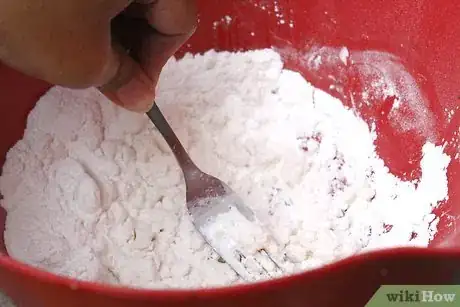
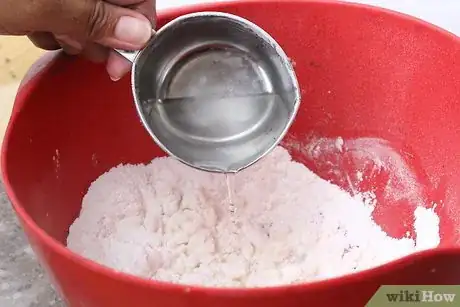

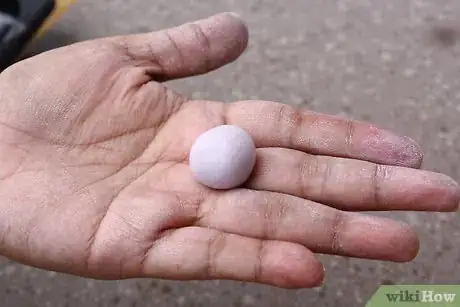
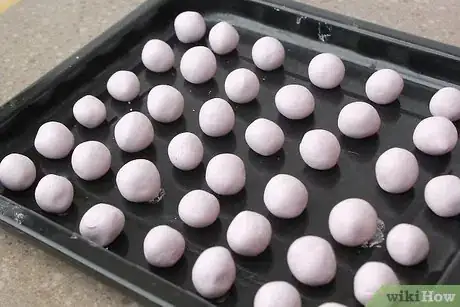
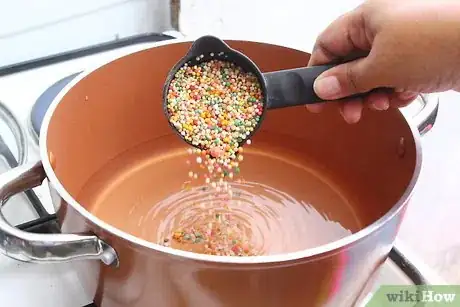
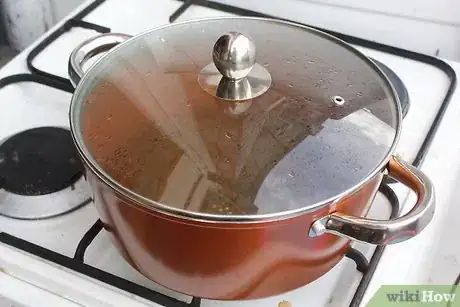



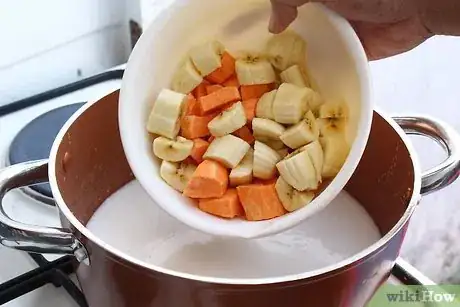
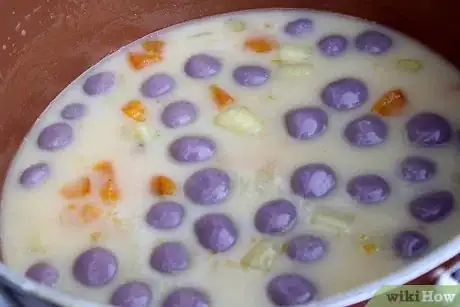
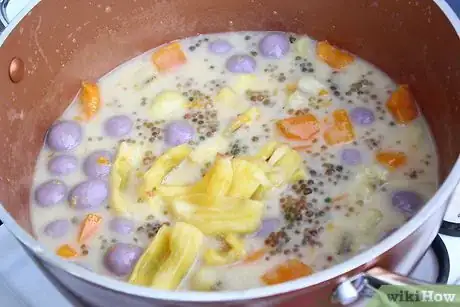



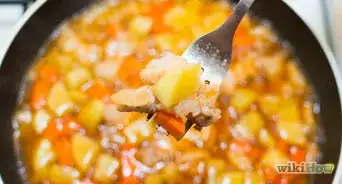
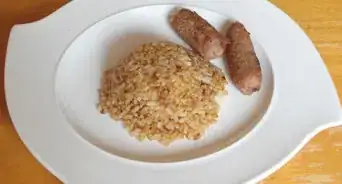

-Step-8.webp)












































